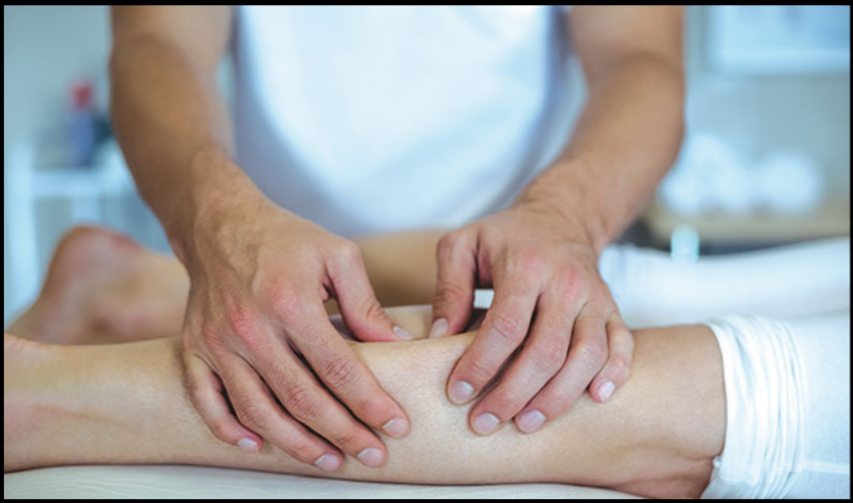What is Osteopathic Medicine?
Osteopathy is a kind of holistic and manual medicine that deals with the prevention, detection, and treatment of musculoskeletal ailments, and the problems of the circulatory system by moving, stretching, or massaging the muscles, bones, and joints.
Osteopathic medicine is a complementary medical approach to recognizing and treating functional disorders in the body.
Osteopathic manipulative medicine or therapy is based on the fact that the human skull, spines, and musculoskeletal system are connected by fine tissue networks (fascia), and blockage in this connection can be released by massage and body’s natural healing power.
Osteopathy vs Chiropractic vs Physiotherapy
Both Osteopathy, Chiropractic, and Physiotherapy are closely related since they are therapeutic medical approaches.
Chiropractic focuses mainly on the treatment of the vertebrae of the spine.
Physiotherapy deals with mobilization techniques, and specific areas of the body, and uses both massage and electrical therapies.
Chiropractic however uses only manipulative technique and seek to treat the whole body as a system, with more focus on muscles, nerves, bone, and joints.
Advantages and Disadvantages of Osteopathy
Osteopaths use only their hands to exert gentle pressure on the muscles, bones, and joints to put them in order, reduce pain, and tension in your muscle, and improve your blood circulation and mobility.
While Osteopathy is safe since there are no drugs involved, its effectiveness is debatable, and there might be some side effects if this treatment approach is not handled carefully.
Pros of Osteopathic Medicine
No Medication is involved
The doctors of osteopathic medicine use a noninvasive approach, and there’s no medication or surgery.
Osteopathy is only about physical therapy, and pain in the joints, body, or spine can be relieved with this treatment approach.
Postural defects, and musculoskeletal and blood circulation problems can be treated with osteopathic manipulative therapy.
It’s Safe for all Age Groups
Osteopathic treatment can be offered to both babies, adults, and seniors since it’s a manual treatment and hands-on therapy.
The osteopathic treatment approach is also not painful so you can be sure there’s no kind of pain or discomfort while an osteopathic physician diagnoses or treat the ailment.
It’s a Preventive therapy
You don’t only go to osteopaths when you’re not healthy or have problems with your musculoskeletal system.
Some of the benefits of going to an osteopath are that ailments can be easily prevented.
You can maintain a healthy life with a proper diet, exercise, and a healthy lifestyle, but you can also complement that with physical therapy.
Medical insurance treatment claim
Osteopathy treatment costs can be claimed with your insurance company.
While most medical insurance supports osteopathy treatment claims, you need to review your insurance company policy before filing for such claims.
A plethora of ailments can be Treated
Osteopathic treatment can be administered to treat a wide range of ailments, and correct malformations, and disorder in the body.
Osteopathy can be used for example to treat lower and upper back pain of pregnant women in the second and third trimesters.
It can be used to relieve different forms of pain, physical injuries, physical stress, bone, and joint problems, and respiratory and blood circulation problems.
While osteopathic manipulative therapy can be used to treat ailments completely, its often used as a therapy and complementary treatment to other treatment procedures in the clinic.
Cons of Osteopathy Treatment
There are a few side effects of osteopathy, and it is worth mentioning them.
Minor discomfort
There are minor problems you may experience after an osteopathy session, such as mild pain, headache, and fatigue.
There could also be an open sore in the treatment area due to the pressure exerted on the muscle.
These minor side effects can go on their own in a few days, so it’s nothing much to worry about.
Osteopathy is not well regulated
Osteopathy treatment is not only handled by experts, other medical practitioners offer osteopathy treatment without adequate background knowledge of this treatment procedure.
Osteopathy is not classified as a mainstream medical practice in some states, and this treatment procedure is not recognized or well-regulated.
Qualified osteopathy doctors are trained to be conscious of the patient’s health and safety, assess the safety of any treatment procedure, and seek the consent of the payment before carrying it out on him/her.
Healing is Slow and Relative
If only an osteopathy treatment procedure is followed to treat ailments, it takes a long time to see the desired result.
Many sessions is required before you can start to get some relief from pain, and while some patients feel relievedfr after osteopathy treatment, some other patients experience no changes or healing.
Osteopathy treatment is not for severe Musculoskeletal problems
In some cases when patients suffer severe body pain, joint or bone infection, and disorders, osteopathy can not be opted for.
Osteopathy is best used as a preventive treatment procedure or complementary treatment, not in serious ailments like rheumatoid arthritis, fractured or dislocated bone, fibromyalgia, ligament damage, tendinitis
The Scope of Osteopathy Treatment is limited
The scope of osteopathy treatment is limited because it’s more effective in the preventive treatment and minor issues than in serious cases.
Serious disorders in the muscles, nerves, bones, and the body system cannot be treated with osteopathy manipulative therapy or are not effective.
